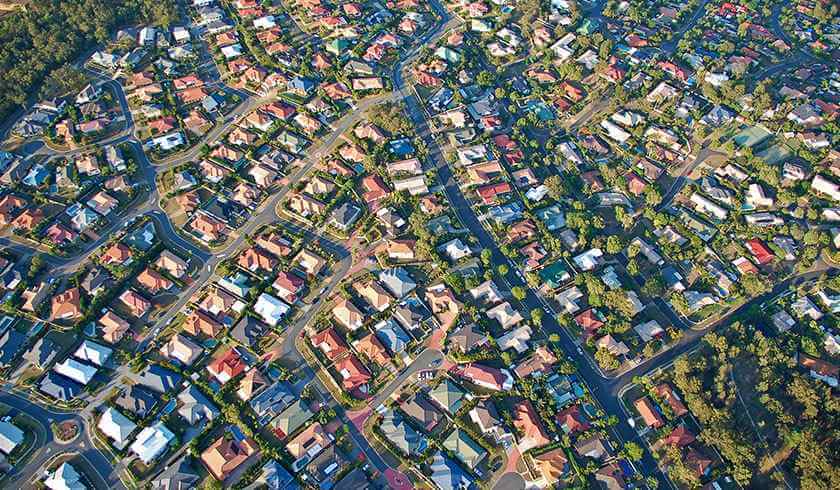Understanding zoning regulations and property consolidation
Understanding zoning regulations can be critical to realise the full potential of a property investment journey, according to a Sydney-based investor.

Some investors sit on properties and don’t understand what they can do with them, so understanding zoning regulations and the potential for property consolidation can be key to investor success, according to property investor Jeremy Iannuzzelli.
“Typical zonings in Sydney would include your R2, which is standard residential, your R3, which is medium density, then your R4, which is high density. Now, each of those different zonings carry different conditions or restrictions,” Mr Iannuzzelli told Smart Property Investment.
He continued: “R4 means yes, you can build units, but you may only be able to build units up to a certain height. R3 may mean yes, you can build townhouses, but there may be restrictions on how many townhouses you can build on that site.”
The Sydney-based investor recently purchased property on a 900-square-metre plot of land zoned R3, located in the southwest Sydney suburb of Eaglevale.
Mr Iannuzzelli added: “We’ll look to do some things with it later on in the future, pending if we can get a couple of the other properties either side of it. So there is a lot of margin in that property, as is, and there’s even more margin if you can consolidate a couple of properties around it.
“Even if it was to bottom out a little bit lower, the real value is through the construction. The real value is the understanding of what a property zoned R3 in the southwest and suburbs can achieve.”
Further, Mr Iannuzzelli declared that it is not only ideal but fundamental to have a twist on a property investment, in order to transform it to meet market demands and maximise gains in the future, from both potential renters and buyers on an investment journey.
“For example in that southwestern suburb of Campbelltown, there are hundreds of thousands of houses in the Campbelltown area, but there are different zonings in that same area,” the Sydney-based investor said.
It is “much better” to purchase an R3-zoned property in the right area as opposed to an R2, and even better to acquire an R4 where possible, because there is much more that investors can do with it, he asserted.
Zoning proximate to infrastructure
The type of zoning on a property can vary depending on the proximity to different types of infrastructure, including lines of public transport in New South Wales.
According to Mr Iannuzzelli: “So, places within 800 metres of a train station, generally speaking, you’ve got an R4 zoning, where 900 metres from a train station you’ve got a stock-standard R2.”
He continued: “So, it’s understanding why is that property worth $600,000 and they want $700,000, is it potentially better to pay $700,000 for a property with R4, as opposed to a street away paying $600,000 for a slightly better looking house?”
It is important to “dig a little deeper” when looking into a property investment, Mr Iannuzzelli suggested, to understand what the zoning twist may be and the upside to what you can do with it as a result.
Property consolidation in action
Further, the Sydney-based investor said: “There’s some blocks that are 400 square metres that are zoned R4, where there might be blocks there that are 900 square metres zoned R2. It’s not necessarily about getting a bigger block, it’s more so about the zoning attached to that block.”
Mr Iannuzzelli noted that he purchased his recent R3 property in Eaglevale knowing that he could build two properties on it at least and “could probably squeeze in three townhouses” with the low-income housing scheme attached to it.
He continued: “We’ve identified that the properties next door have been owned for quite a while by elderly people, but the houses next door are very rundown and it would be worthwhile spending a bit more money to buy the adjoining houses.”
As long as there is a tenant renting the Eaglevale property in the interim between selling or renovating, the Sydney-based investor noted, it’s essentially mopping its own floors.
“To an investor, they’re probably not ideal, and to a home owner, they’re probably not ideal, because the houses are very rundown and very old,” Mr Iannuzzelli said.
“To me, who has already secured the corner block, which is the most important one, buying the houses next door is a good land-banking strategy for me in the future because each property we get moving forward only adds to the value and the number of properties that can be built on the site.
“When you buy property, you really need to understand what’s the plan for it, you don’t just sometimes buy in scattered territories. The golden rule sometimes, generally speaking, when the property next door comes up for sale, you buy it. But it has got to be within reason. If it’s next door to your house and it’s zoned R2, then you can’t do anything with it.”
